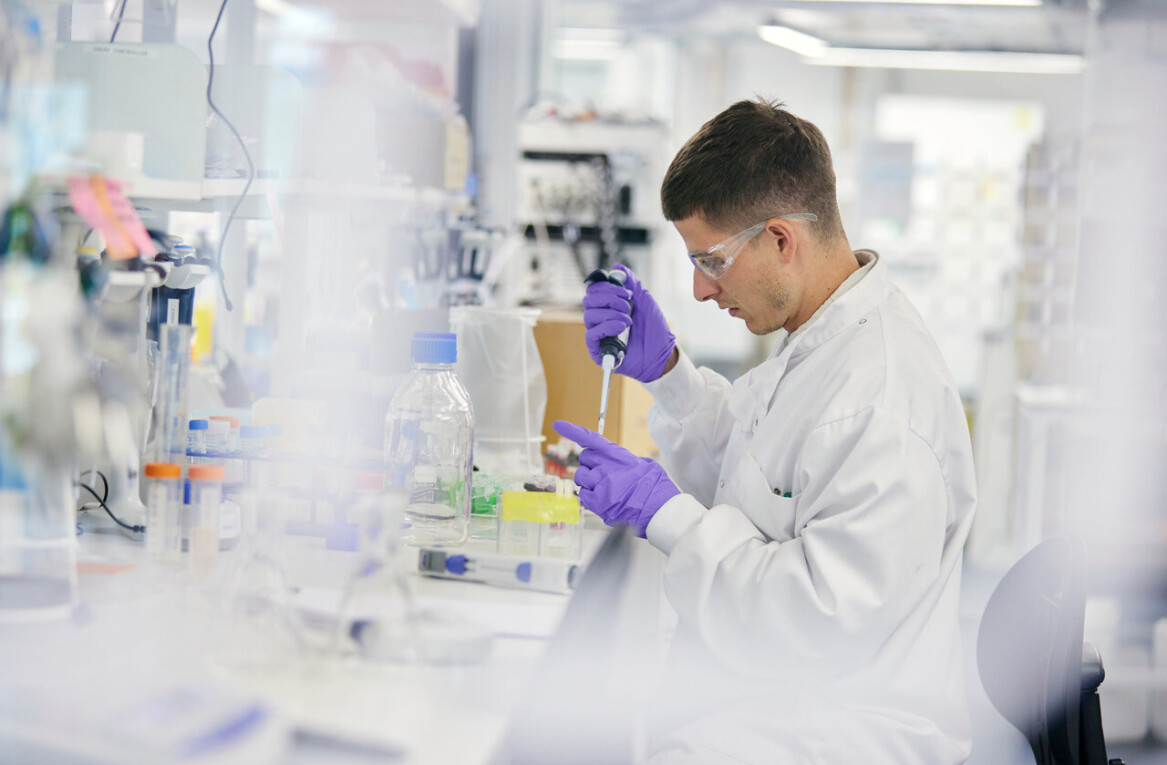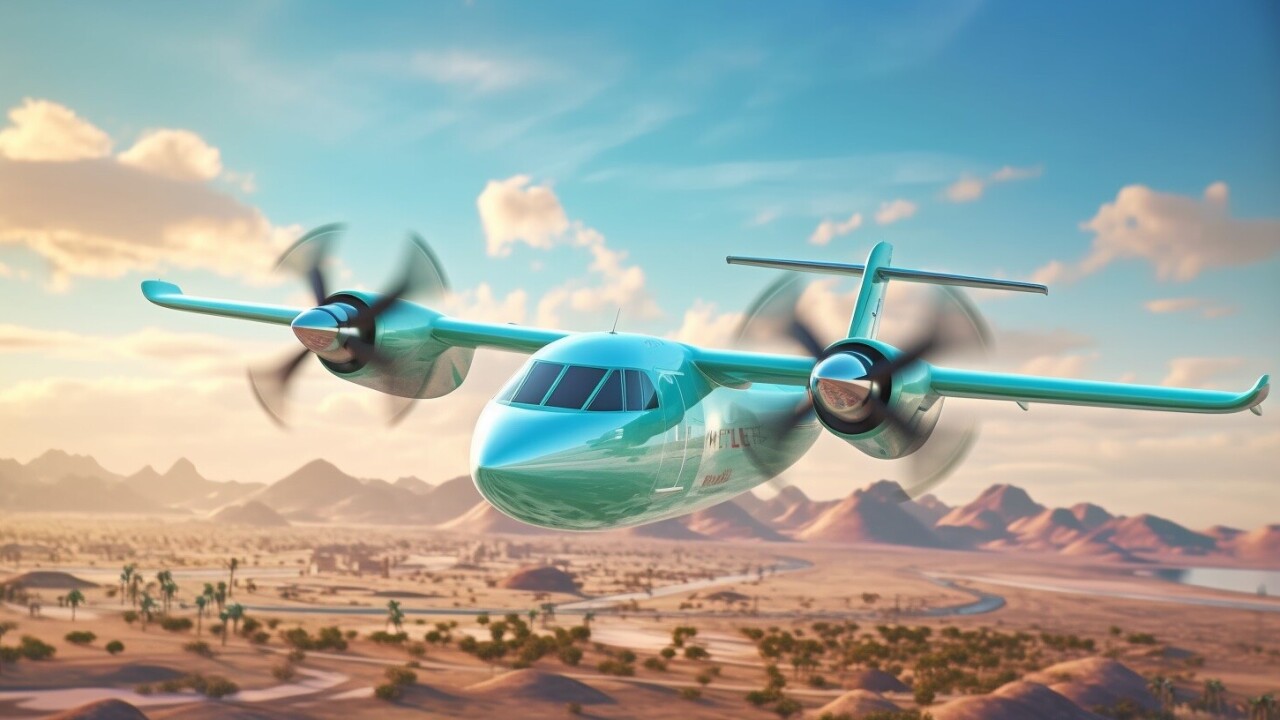
Hydrogen-powered planes are, essentially, nothing new. The USSR flew the alternative fuel testbed Tupolev Tu-155 on hydrogen (and liquid natural gas) more than 35 years ago.
However, challenges associated with the technology meant that it was basically moth-balled for commercial aircraft operations (rocket fuel is another matter) — until now. With the future of the planet in peril, almost everyone in air transport wants to talk about hydrogen propulsion.
From startups to multinational original equipment manufacturers (OEMs), much of the industry is adamant that hydrogen can make zero-emission flights a reality.
It is just a matter of actually building the engines and the planes, ensuring adequate and economically viable fuel supply and infrastructure, scaling the technology — and, of course, convincing regulators that it is safe enough for commercial flights carrying passengers.
“Most technologies required for a hydrogen-powered aircraft are emerging already in other industries and we have been working on this for some time already,” aerospace giant and hydrogen-propulsion proponent Airbus shared with TNW. “We’re not starting from scratch. The main challenge will be to certify them to airworthiness standards.”
Researchers have indeed been hard at work for years studying both direct combustion and the conversion of hydrogen into electrical energy through fuel cells. (Both are applicable to aviation and we will look more closely at them further on.)
The technology has, on the whole, been proven to work. But what will it take to make air travel “guilt-free” in earnest?
Past few years have seen ‘dramatic’ validation of hydrogen aviation
Aviation accounts for about 2.5% of carbon dioxide emissions worldwide. However, its share is rising quickly. The industry is expanding at an alarming rate, with the global fleet of aircraft predicted to grow by 80% by 2041, compared to pre-pandemic 2019 levels. Furthermore, aviation has an impact on the climate that goes far beyond CO2.
“Sustainability in aviation used to be buying random offsets in various places,” Val Miftakhov, founder of hydrogen fuel-cell powertrain developer ZeroAvia, tells TNW. “In the last five years, we have seen dramatic validation of hydrogen aviation.”
Miftakhov is something of a veteran in zero-emission transportation, having founded eMotorWerks, developing SmartGrid-integrated EV charging technologies, in 2010. After selling the company in 2017, Miftakhov, a long-time pilot hailing from a family legacy of aerospace engineering, turned his attention to decarbonising one of the world’s most hard-to-abate sectors.
Zero emissions from the UK to the Netherlands by 2025
ZeroAvia has one of the most ambitious timelines in the hydrogen aviation industry. The company intends to have a fuel-cell engine capable of powering a 19-seater aircraft for flights between the Netherlands and the UK commercially ready as soon as 2025.
In January this year, ZeroAvia flew a Dornier 228 19-seater testbed, at the time the largest commercial aircraft powered by a hydrogen fuel cell, for the first time. (That title has since been — temporarily — nicked by US-based Universal Hydrogen and its 40-seat ATR 72 nicknamed ‘Lightning McClean’. ZeroAvia intends to steal it back with a Bombardier Dash 8 Q400.)
The testbed aircraft took off from Cotswold Airport in Gloucester, UK, and was powered by a conventional engine on the right wing, and ZeroAvia’s ZA600 600 kW hydrogen-electric engine on the left.
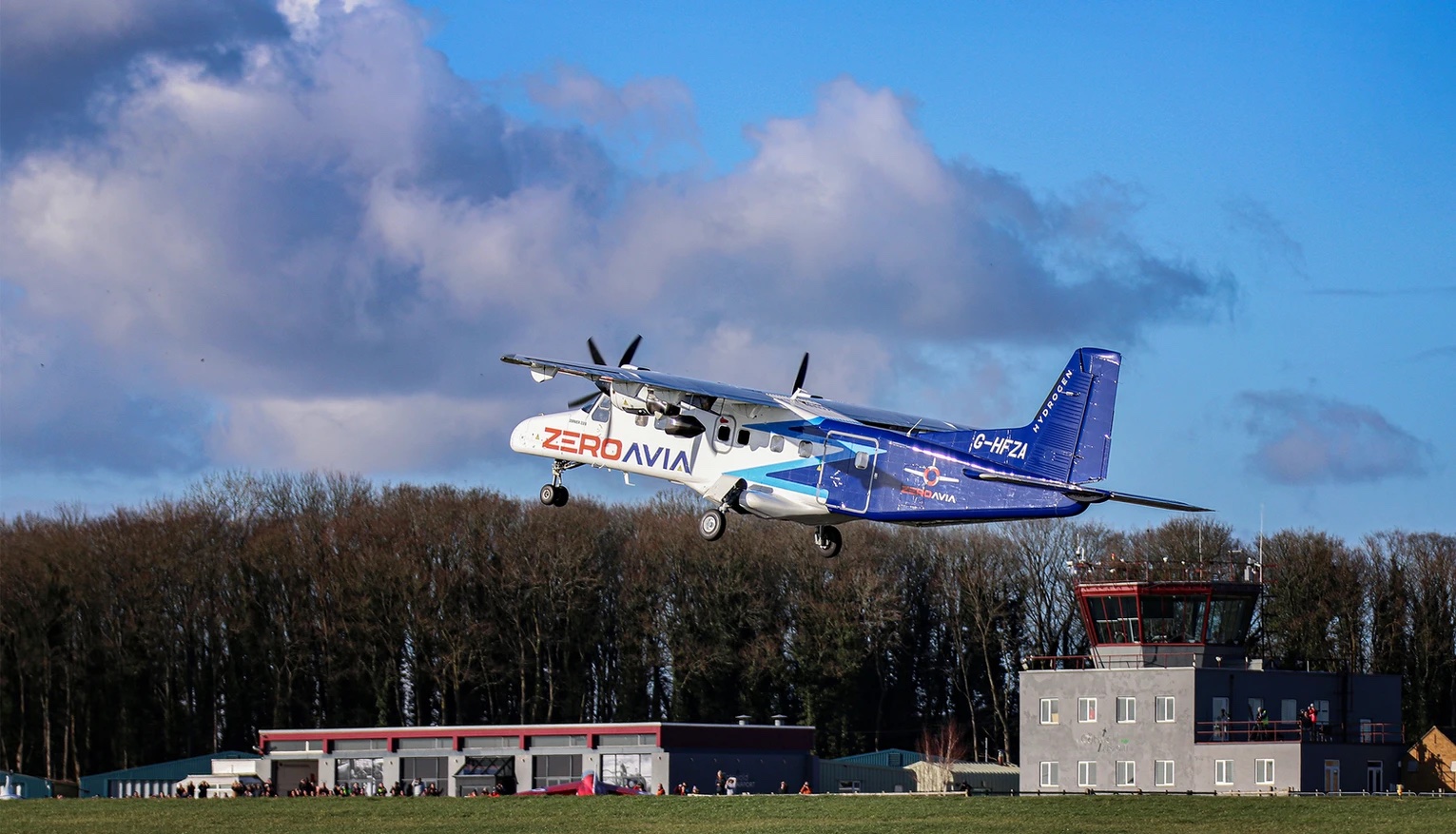
The company is also developing a powertrain for 40 to 80-seater aircraft with a range of 1,000NM (1,852km), the ZA2000, which it says will be ready for commercial use by 2027. Thus far, it has secured €10bn in pre-orders from a number of the major global airlines and lessors, who plan to use it to retrofit their regional fleets.
ZeroAvia is still mulling over a shortlist of potential manufacturing sites. “We are looking for the shipments of our engines to start in 2025. So we have to have production capacity next year, which means that we have to finalise locations this year,” Miftakhov told TNW, adding that the decision would probably be made by the end of summer.
Realistic entry-into-service projections?
Not everyone in the field shares ZeroAvia’s enthusiastic timeline. Josef Kallo, founder and CEO of H2FLY, a Stuttgart-based startup also developing a hydrogen-electric fuel-cell propulsion system, says that 40 seats with a range of about 2,000km is more likely to happen by 2029.
“I am a little concerned that we have to tell a realistic path to the realisation, even if it’s a little bit more risky for the financing,” Kallo tells TNW, adding that he believes his colleagues in the space might be underestimating how much effort and time needs to go into component development.
It’s not as if H2FLY hasn’t gotten far already. The company, founded out of the University of Ulm and the German Aerospace Center (DLR) in 2015, performed the maiden flight of its four-seat hydrogen fuel-cell powered aircraft, the HY4, in 2016. It has since achieved several significant milestones, including the world altitude record for a hydrogen-powered aircraft, cruising at 7,230 feet.
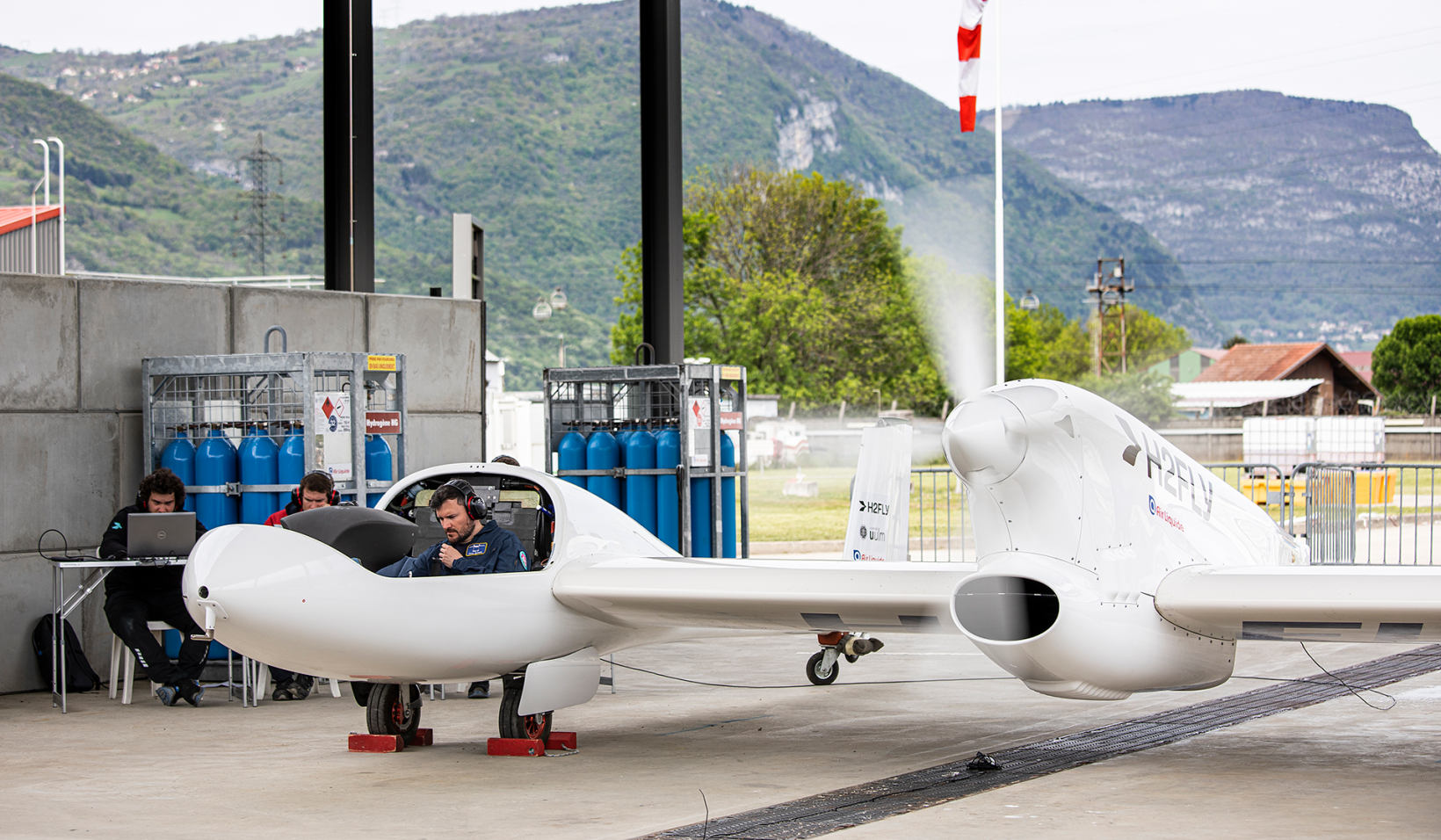
Furthermore, H2FLY completed the successful integration of a new liquid hydrogen storage system in April this year. The ground fueling tests were part of the EU-funded Project Heaven (short for High powEr density FC System for Aerial Passenger VEhicle fueled by liquid HydrogeN), and the aircraft has now been shipped to Slovenia for a summer flight test campaign.
The company also recently announced the H175 program for its next generation fuel-cell system, capable of powering aircraft in the megawatt-class range, for 20 to 80 seats. H2FLY hopes to have it certified “by the end of this decade.”
Retrofitting existing airframes compared to clean-sheet designs
If anyone thinks that civil aviation regulators would allow operators to strap even a conventional tube-and-wing configuration to some hydrogen tanks and off into the zero-emission future we go, they would, naturally, be mistaken.
According to Airbus, hydrogen planes will “need to achieve equivalent or better safety levels [to kerosene-powered jets] before hydrogen-powered aircraft will take to the skies.”
It can usually take anywhere between five to nine years to certify a new aircraft. Established OEMs will have a leg up on startups when it comes to certifying clean-sheet designs, due to experience of the process.
This is why startup powertrain developers have decided to go down the route of retrofitting existing airframes with their propulsion systems. However, converting older airframes is not going to go on forever.
“Really visionary is to have a new aircraft designed for the [hydrogen] propulsion and then use that with all the benefits to really have long-range, high-efficiency, low-noise aviation,” Kallo states.
Those who are looking to design larger aircraft powered by hydrogen will need a new approach to everything from aerodynamics, structural reinforcement, thermal management, and systems integration.
Solving the storage problem
Hydrogen has a higher energy density by weight than jet fuel. However, it has a lower energy density by volume. This means that putting hydrogen tanks on a plane entails throwing out seats or cargo capacity, i.e. paying customers or payload, or altering the design of the aircraft.
In addition, storage of hydrogen as a gas requires high-pressure tanks (350–700 bar tank pressure), whereas hydrogen as liquid, albeit taking up less space, requires cryogenic temperatures of -252.87°C.
For instance, a blended wing body design (BWB) could offer potential benefits to storing hydrogen on board due to larger internal volume compared to traditional tube-and-wing designs.
A few intrepid companies out there are already intending to build new planes specifically designed for hydrogen propulsion. One is Swiss startup Destinus, which is developing a hypersonic hydrogen-powered jet capable of travelling at Mach 5 and above.
Another concept is the blended wing body Kona, designed to “revolutionise the status quo of freight transportation,” from aerospace startup Natilus. The company recently completed flight testing of a quarter-scale prototype aircraft, following three years of extensive wind-tunnel testing.
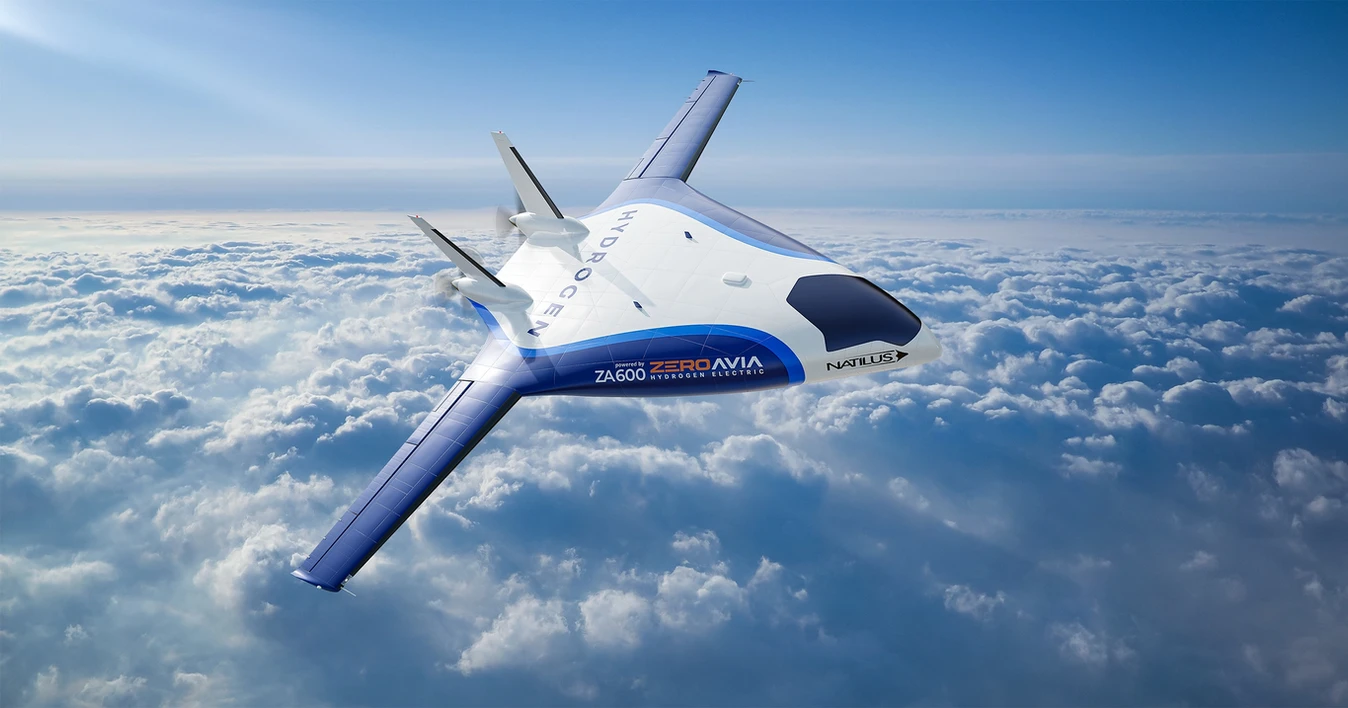
While ZeroAvia has decided to go after existing types of aircraft for certification purposes, the company has all critical technologies, such as high-temperature fuel cells, motor and electronics development, in-house, and for very practical reasons.
“There’s no supply chain for this yet, because it’s so new,” Miftakhov states.
There might not be a supply chain for parts yet, but OEMs are also labouring away at new propulsion technologies. For example, British engine maker Rolls-Royce is also developing a range of products based on hydrogen fuel cells.
Hydrogen-electric vs. direct combustion
A hydrogen fuel cell is an electrochemical cell that converts the chemical energy of hydrogen into electricity. Fuel cells enable aircraft to produce electricity autonomously without the need for a built-in battery that requires charging from an external power source.
They do not have any moving parts and, as such, operate in near silence. As previously mentioned, this requires extensive component development.
However, this is not the only technological pathway to flying planes on hydrogen. A more immediate means of using existing gas turbine technology would be through direct hydrogen combustion.
Hydrogen combustion works in the same way as conventional internal combustion. It can work equally well in turboprop and turbofan engines and is scalable for different types of aircraft configurations and ranges. However, it comes with a different set of considerations.
The technology eliminates most emissions and reduces some remaining ones such as nitrous oxide (NOx). But, it does produce water vapour, which in turn produces contrails. Research shows that contrails may be responsible for as much as 50% of aviation’s warming effects.
However, the contrails produced by hydrogen combustion differ from those generated by burning fossil fuels. In July last year, Airbus announced a project called Blue Condor, which will use two gliders — one fitted with a H₂ combustion engine and one with a conventional kerosene engine — to study hydrogen contrail formation.
ZEROe
Airbus is looking into both technological pathways. A little over two years ago, the European aerospace behemoth unveiled four possible hydrogen aircraft concepts — known collectively as ZEROe — with the promise of delivering one into commercial service by 2035. Three of the designs under the ZEROe umbrella use hydrogen combustion.
One of these is a BWB. However, Airbus has said it will not be the first hydrogen plane out of the gate, as designing both a new propulsion system and a new airframe at the same time would be incredibly complicated.

The fourth concept aircraft, representing a high-wing 100-seat regional airliner, features six eight-bladed propellers attached to removable fuel-cell engine pods. Essentially, each pod is a stand-alone propeller propulsion system.
They feature propellers, electric motors, fuel cells, power electronics, liquid hydrogen tanks, cooling systems, and a set of auxiliary equipment. Due to the removable fixtures, the pods can be quickly disassembled and reassembled, potentially creating rapid solutions for refuelling at airports.
In order to try the associated technologies, Airbus will use an A380 flying testbed equipped with liquid hydrogen tanks, and hydrogen engines mounted on the fuselage. The double-decker airframe employed for the mission is none other than MSN 001 — the very first A380 to roll out of the factory. Airbus says the demonstrator will take off on its first flight in the next five years.

Not all are convinced by Airbus’ efforts thus far. William Todts of Transport & Environment states that the company is spending more time and money building the hype than the planes.
Meanwhile, there is another crucial element missing — the actual fuel to power all this innovation. Nobody will buy an aeroplane they cannot operate. Not only does the promised land of zero-emission aviation need access to an abundance of hydrogen; it needs it to be green.
Green hydrogen
Green hydrogen is produced by splitting water into hydrogen and oxygen through electrolysis using renewable electricity. Currently, it accounts for less than 1% of global hydrogen production, with the other 99% derived from non-renewable sources that produce greenhouse gas emissions. So what will it take to scale?
Carol Xiao, an expert on hydrogen with the Institute for Sustainable Process Technology (ISPT) in the Netherlands, says that, contrary to what she first thought when learning about the industry, money is not the problem.
“The money is there,” Xiao tells TNW. However, she adds, investors will not commit as long as the supply and demand chains are not secure.
According to Xiao, aviation can have a substantial impact when it comes to creating a market for green hydrogen. “If they say ‘we will use hydrogen’, especially green hydrogen, they will be a market which people can supply,” she continues. “It will help the supply chain make a decision on equipment, and it will also help get the infrastructure ready.”
Technology without a business case?
In addition, the industry will also be competing for materials to build hydrogen electrolysis production plants — and the renewable energy to run them.
“I think if we fail, we will fail on the renewable energy provision, and not on the technology,” Josef Kallo says. “And this has to go hand in hand. Otherwise, we’re working on the technology but there is no business case because there is no infrastructure and fuel.”
Guillaume Faury, Airbus chief executive, seems to share these concerns. At a company event last year, Faury said that availability or lack of availability of clean hydrogen at the right quantity in the right place at the right price in the second half of the decade was a “big concern.” He further added that a lack of green hydrogen could be a reason for delaying the launch of the ZEROe programme aircraft.
The renewable energy equation
Using renewable energy to produce hydrogen could help solve problems around what is known as intermittency — the unpredictable and fluctuating nature of certain renewable energy sources, such as solar and wind power.
“You can use hydrogen production and hydrogen storage as a grid storage mechanism; you can generate it when the renewable power is abundant on the grid, and then utilise it when you need to on the aircraft,” says Miftakhov.
“That allows you to, in fact, increase the renewable penetration of the grid. We know that we can make it economical, and we can scale it.”
Achieving economies of scale will also bring the cost of renewable hydrogen down, with predictions that the price will drop from the 2020 cost of 5–7$/kg, to ~3$/kg in 2030, and ~2$/kg in 2050. One recent study showed that, taking into account a potential tax on fossil jet fuel and the price of carbon, it could become cheaper to run a hydrogen plane than its kerosene-powered counterpart by 2035.
How aviation can be certain it will get priority when it comes to accessing a limited supply — or all the renewable energy it will require — is another matter.
Aviation’s decarbonisation journey is anything but easy. Nor is it moving at a fast enough pace. With record-breaking aircraft orders happening as we speak, it is clear that neither airlines nor aircraft manufacturers have any intention of curbing the industry’s growth.
With all the challenges that hydrogen-powered aviation still has to face, it may seem like a long shot. But with concerted efforts and the potential for widespread adoption, it could maybe, just maybe, make zero-emission air travel a reality.
Get the TNW newsletter
Get the most important tech news in your inbox each week.




